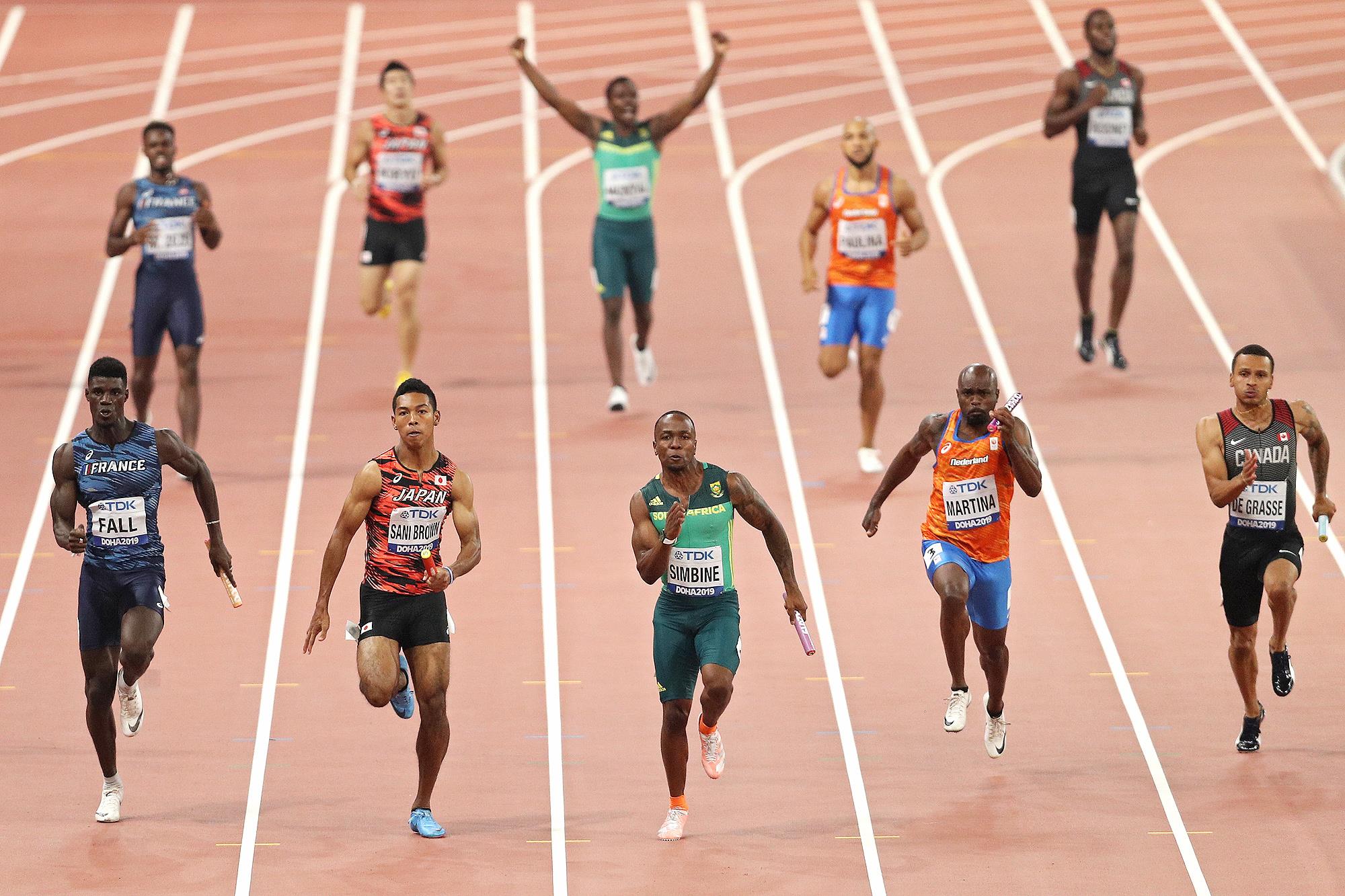
via Getty
RIO DE JANEIRO, BRAZIL – AUGUST 20: Allyson Felix of the United States reacts after winning gold during the Women’s 4 x 400 meter Relay on Day 15 of the Rio 2016 Olympic Games at the Olympic Stadium on August 20, 2016 in Rio de Janeiro, Brazil. (Photo by Ezra Shaw/Getty Images)

via Getty
RIO DE JANEIRO, BRAZIL – AUGUST 20: Allyson Felix of the United States reacts after winning gold during the Women’s 4 x 400 meter Relay on Day 15 of the Rio 2016 Olympic Games at the Olympic Stadium on August 20, 2016 in Rio de Janeiro, Brazil. (Photo by Ezra Shaw/Getty Images)
While a lot of attention is drawn towards the singles events such as the 100m and 200m sprints, hurdles, and other such sports, a considerable amount of focus goes into the Relay races that involve teams of every country participating to determine the joint capabilities of their athletes.
Unlike singles races, relay races take a team effort and the work of each member is vital to the overall success of the team. The 4x100m relay takes place across the entire length of a track setup. A team of four athletes represents each country and each one of these athletes has to run a distance of 100m before passing a baton to the next teammate.
ADVERTISEMENT
Article continues below this ad

Athletes are expected to stay in their own lane and must not cross into the other lanes throughout the race. Doing so would result in disqualification.
The baton is a symbol of the continuity of the race and it is the single most vital part of the entire competition. A plastic object weighing about 50g, the baton must not be lost during the course of the race. The baton is passed on from one athlete to the other through a distance of 20m and contestants are expected to complete the exchange within this distance for it to be valid.

If the baton is dropped, the teammate is allowed to recover it unless it obstructs the motion of another competitor. In certain competitions, dropping the baton itself calls for disqualification. Even though the Olympics allows recovery of the baton, it is costly to the team in question due to the tie and momentum lost.
Batons must be exchanged flawlessly throughout the relay
Batons cannot be thrown from one athlete to the other and must only be exchanged from hadn’t to hand. Throwing the baton results in immediate disqualification. After passing on the baton, athletes are instructed to stay in their own lanes so other competitors are not obstructed in any way.

At the start of the race, the four athletes must decide in which order they are to compete and must stick to that order throughout the race. When the gunshot is fired, contestants take off from the starting block. In case any athlete starts early, the lineup is warned of a false start. If the offense is repeated by any other athlete, the entire team is disqualified.
The final athlete is the most crucial as the run-down to the finish line determines the winner. The athlete must cross the finish line with the baton in their hand, failing which the result won’t be counted. The final athlete is also expected to wear a tear-off tag on their bib so that the timer can record the final timing and decide the winner.
ADVERTISEMENT
Article continues below this ad

ADVERTISEMENT
Article continues below this ad
Judges sometimes view a replay of the entire race to determine the legitimacy of all baton passes and movements before making a final decision.
Read more: What Are the Rules of the 100m Sprint to Be Held at the Tokyo Olympics 2021?
ADVERTISEMENT
ADVERTISEMENT
ADVERTISEMENT
ADVERTISEMENT

